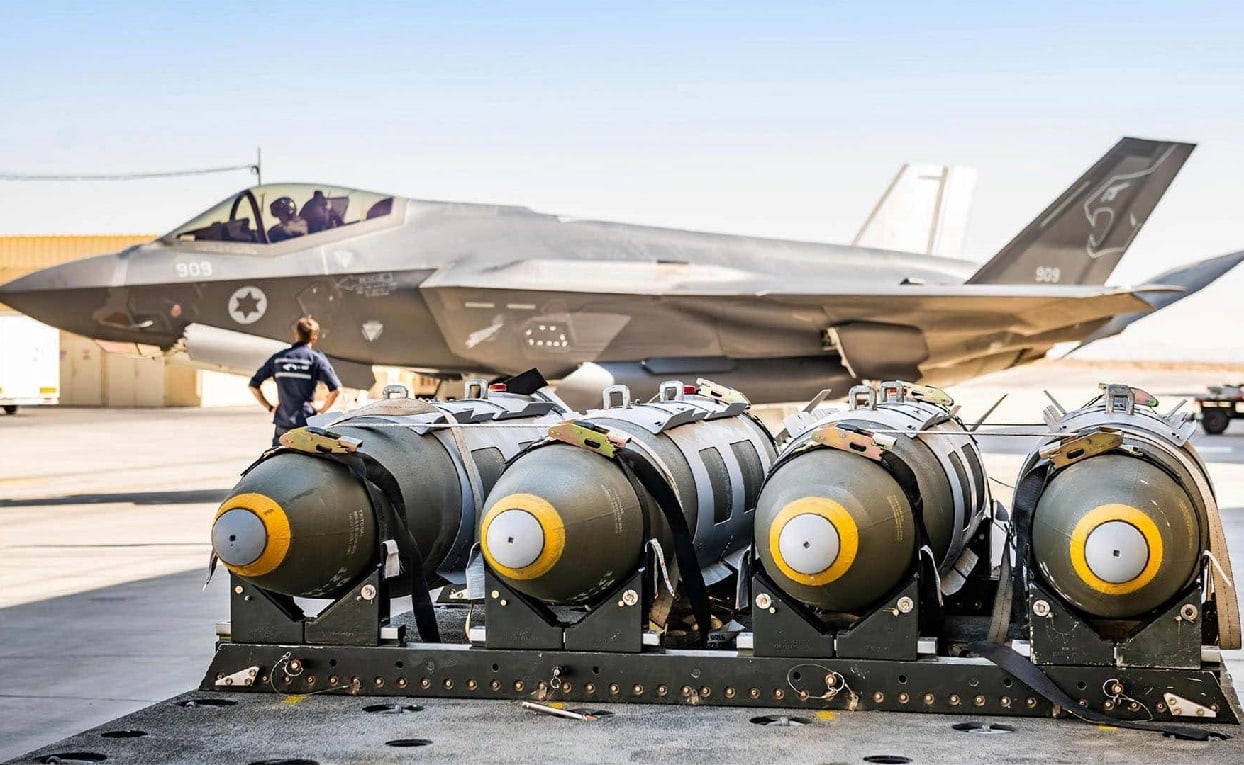The shortest air travel (bird fly) distance from Israel to Iran is about 1,112 miles (1,789 km), while the Islamic Republic’s capital city of Tehran is about 1,273 miles (2049 km). The distance matters when you consider that on June 1, 1981, as part of Operation Opera, the Israeli Defense Forces (IAF) attacked Iraq’s Osirak reactor southeast of Baghdad. It successfully destroyed the Osirak nuclear reactor and severely disrupted the Iraqi nuclear program.
Today, Israel has good reason to fear Iran, which is now engaged in its own nuclear program. The issue is that the Islamic Republic’s program consists of several facilities that are spread across the country, and are far more adequately protected than that of the Iraqi or the Syrian facilities – the latter of which were targeted by the IDF in 2007.
It is for such reasons that the Israeli Air Force (IAF) considers the combat range of its aircraft as an important factor. As The Aviationist reported earlier this year, the IAF was the very first operator to ask for external fuel tanks for the F-35 Lightning II. The Middle Eastern nation has been seeking to add such tanks to its F-35I “Adir,” the country’s unique variation of the Lockheed Martin-built Joint Strike Fighter.
As arguably the most advanced and capable combat aircraft ever built, the F-35 offers great strike capabilities including the ability to conduct stealth operations in the early stages of a conflict, and then transition to “Beast Mode” with greater weapons capacity after an adversary’s air defenses have been destroyed. However, the internal fuel tank capacity of just less than 18,500 pounds and a non-classified range of 1,187 nm (2,200 km) would mean that it couldn’t successfully even reach Iran’s nuclear facilities – let alone make the return flight.
Refueling capabilities could be answer, and as Forbes reported, recently Israel has continued to conduct demonstrations of how tanker aircraft could allow the IAF to reach even Tehran. Yet, that doesn’t address the fact that Iran has greatly improved its aged air defenses, and that includes the highly formidable high-altitude S-300 platform from Russia.
This is where those external tanks could be crucial. According to a recent report from Aerospace Daily & Defense Report, which is part of the Aviation Week Intelligence Network (AWIN), Israeli-based firms are now rolling out a 600-gallon external fuel tank as well as a fifth-to-fourth-generation communication system as export options for the Lockheed Martin F-35. Israel Aerospace Industries (IAI) has developed a new pylon to carry an Elbit Systems-designed external fuel tank.
These external drop tanks could help the F-35I Adir complete long-range missions over so-called “Third Circle” targets that include those deep in Iran. This would allow the aircraft to strike the targets without the need for the aerial refueling, while also allowing for extended time on station (TOS) over the targets. The critical part is of course how the external fuel tanks could be employed without degrading the low observability of the F-35. This will likely be done through the shape and materials used in their construction.
Israel is not alone in considering the use of fuel drop tanks, and Lockheed Martin has considered how these could be used on the F-35A in conjunction with the “Beast Mode.”
While Israel won’t likely be launching an attack against Iran’s nuclear facilities just yet, it will certainly work towards making that ever more possible. Given that the Islamic Republic has vowed to destroy Israel, it is understood why the IAF would want such capabilities.
Peter Suciu is a Michigan-based writer who has contributed to more than four dozen magazines, newspapers and websites. He regularly writes about military small arms, and is the author of several books on military headgear including A Gallery of Military Headdress, which is available on Amazon.com.

